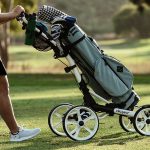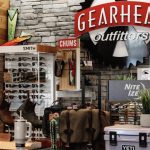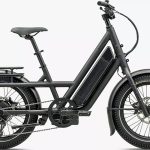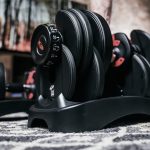Nautilus, Inc. reported sales vaulted 82 percent in the fourth quarter and predicted sales to climb in the range of 55 percent to 75 percent in the first quarter.
Fourth Quarter 2020 Highlights Compared to Fourth Quarter 2019
- Net sales were $189.3 million, up 81.7 percent compared to $104.2 million last year and up 108.3 percent, excluding sales related to the Octane brand, which was sold in October 2020. Sales growth was driven primarily by continued demand for connected-fitness bikes including Schwinn IC4, Bowflex C6 and VeloCore, and robust sales of SelectTech weights and Bowflex Home Gyms. Strong execution across the organization coupled with supply chain improvements that began earlier in the year drove these record results. Importantly, due to the severe shortage of shipping containers, some factory fulfilled orders, representing over $16 million in revenue, did not ship in late December. Container shortages, worsening global logistics disruptions and continued factory capacity constraints resulted in $91.5 million of backlog.
- Gross profit was $77.9 million, up 104.1 percent compared to $38.2 million last year. Gross margin rate expanded by 450 basis points to 41.1 percent driven by increased full-priced selling in Direct, improved wholesale margins in Retail, and fixed costs leverage, partially offset by increased transportation costs driven by global logistics disruptions.
- Operating expenses increased by $1.5 million or 4.4 percent to $36.4 million primarily due to increased general and administrative costs and research and development costs offset by a reduction in sales and marketing expenses.
- Operating income was $41.5 million, a $38.2 million or 1,160.8 percent improvement compared to $3.3 million last year. This quarter’s operating income is second only to the $44.0 million of operating income in Q3 2020, which included a gain of $8.3 million related to the Octane transaction. Excluding that gain, Q4 2020 represents the highest quarterly operating income in the company’s history.
- Income from continuing operations increased by 698.6 percent to $29.3 million, or $0.90 per diluted share, compared to $3.7 million, or $0.12 per diluted share last year.
- Net income increased by 729.8 percent to $28.9 million, or $0.89 per diluted share, compared to $3.5 million, or $0.12 per diluted share last year.
- The tax rate for the fourth quarter was 22.7 percent.
- EBITDA from continuing operations was $40.3 million, a $34.3 million, or 578.1 percent improvement compared to $5.9 million last year.
Management Comments
“Our team’s passion to deliver a best-in-class consumer experience resulted in our strongest quarterly performance of all time. We delivered robust growth across our brands, channels and products. Net sales grew 82 percent or 108 percent excluding the impact of the Octane brand, which we sold in October 2020. We expanded gross margins by 450 basis points, delivered operating income of $41 million and generated $40 million of EBITDA,” said Jim Barr, CEO, Nautilus Inc. “The demand for in-home fitness has not abated in early 2021, even in the face of a vaccine roll-out. We ended the year with $91 million in backlog as, similar to many industries, we continue to face disruptions in global logistics. We are managing through these temporary constraints which we expect will remain through the first half of calendar 2021. Strong consumer response to our expanding cardio and strength offerings, particularly our IC bikes, SelectTech weights and Home Gyms drove our performance in the quarter.”
Barr continued, “During the holiday fitness season, we added to our product portfolio by launching the new Bowflex C7 bike, two Bowflex Treadmills, and an updated Max Trainer all integrated with the JRNY digital fitness platform through HD touchscreens. Additionally, our new VeloCore bike, the industry’s first (un)stationary, dual-mode bike that combines learning technology with digital connectivity, won a prestigious Consumer Electronics Show 2021 Innovation Award. These new products and JRNY 2.0 have received incredible coverage and glowing customer reviews, positioning us well for 2021. Lastly, we completed North Star, our long-term strategy that builds on the company’s well-known brands, reputation for quality and innovation, broad product portfolio, and consumer-focused company culture. We ended the year with over $90 million of cash and short-term investments, providing additional resources needed to accelerate our North Star strategy and ultimately deliver sustainable long-term growth.”
Fourth Quarter 2020 Segment Results Compared to Fourth Quarter 2019
Direct Segment
- Direct delivered its best quarterly sales in segment history. Net sales were $82.2 million, up 128.8 percent from last year. Cardio sales increased by 78.0 percent, driven by the Schwinn IC4, Bowflex C6 and VeloCore connected-fitness bikes. In the fourth quarter, the company launched a new generation of Bowflex connected treadmills integrated with the JRNY digital fitness platform through an HD touch screen console. Strength products grew 372.1 percent led by the SelectTech weights and Bowflex Home Gyms.
- As of December 31, 2020, Direct’s backlog totaled $46.5 million compared to $3.5 million as of December 31, 2019. These amounts represent unfulfilled consumer orders net of current promotional programs and sales discounts.
- Gross margin rate expanded by 370 basis points to 53.6 percent primarily driven by increased full-priced sales and favorable fixed costs leverages, partially offset by higher transportation costs.
- Segment contribution income was $23.6 million, compared to a loss of $5.0 million last year. The $28.6 million improvements were primarily driven by higher gross profit and decreased media spend. Advertising expenses were $10.5 million compared to $12.9 million last year.
Retail Segment
- Retail delivered its best quarterly sales in segment history. Net sales were $106.3 million up 57.5 percent from last year and by 96.2 percent over last year excluding sales related to the Octane brand. Cardio sales increased by 59.4 percent, driven by bikes, particularly the Schwinn IC4 connected-fitness bikes, Max Trainer, treadmills, and ellipticals. Strength products sales grew by 52.5 percent, led by Bowflex Home Gyms and the SelectTech weights and benches.
- As of December 31, 2020, Retail’s backlog totaled $45.0 million compared to $2.3 million as of December 31, 2019. These amounts represent customer orders for future shipments and are net of contractual rebates and consideration payable to applicable Retail customers.
- Gross margin rate expanded by 230 basis points to 31.1 percent primarily driven by favorable customer mix and fixed costs leverage, partially offset by higher transportation costs.
- Segment contribution income was $25.3 million, 107.0 percent or $13.1 million higher than last year primarily driven by higher gross profit and leveraging of fixed costs.
Full Year 2020 Highlights Compared to Full Year 2019
- Net sales for 2020 were $552.6 million, up 78.7 percent compared to $309.3 million in 2019 and up 97.2 percent excluding sales related to the Octane brand. Sales growth was driven primarily by strong demand for the Schwinn IC4 and Bowflex C6 connected-fitness bikes, Bowflex Home Gyms, and SelectTech weights. Positive customer response to the new JRNY powered connected fitness products launched in 2020, like the VeloCore bikes, new treadmills, and new Max Trainer also contributed to sales growth. Full-year sales results were in the mid-point of the company’s guidance of $540 million to $565 million. Importantly, due to the severe shortage of shipping containers, some factory fulfilled orders, representing over $16 million in revenue, did not ship in late December. If these products had shipped as planned, net sales for 2020 would have been approximately $569 million.
- Gross profit for the year was $228.8 million, up 106.9 percent compared to $110.6 million in 2019. Gross margin rate expanded by 560 basis points to 41.4 percent, driven by increased full-priced selling in Direct, improved wholesale margins in Retail, and fixed costs leverage, partially offset by increased transportation costs driven by global logistics disruptions.
- Operating expenses were $151.0 million, down 28.5 percent compared to $211.1 million last year, primarily because of lower one-time costs. This year, the company recorded a loss on the disposal group of $20.7 million and last year, the company recorded goodwill and other intangible impairment charges of $72.0 million. Additionally, the company pulled back on paid advertising, given strong organic demand and inventory scarcity. These expense reductions were partially offset by increases in general and administrative and research and development costs.
- Full-year operating income hit an 18-year high at $77.8 million, an improvement of $178.4 million compared to the $100.5 million loss last year.
- Income from continuing operations increased to $60.5 million, or $1.88 per diluted share, compared to a loss from continuing operations of $92.3 million, or -$3.11 per diluted share.
- Net income was $59.8 million, or $1.86 per diluted share, an improvement of $152.6 million compared to last year’s loss of $92.8 million, or -$3.13 per diluted share last year.
- The effective tax rate from continuing operations for the year was 16.8 percent versus last year’s 9.4 percent. The higher rate this year was primarily due to profit generated in the U.S. partially offset by the 14 percent rate benefit of net operating loss carry-backs as a result of the enactment of the CARES Act.
- EBITDA from continuing operations was $83.7 million compared to a loss of $90.2 million, an improvement of $173.9 million.
The following statements exclude the impact of this year’s loss on the disposal group and last year’s goodwill and other intangible impairment charges:
- Adjusted operating expenses decreased by 6.3 percent to $130.3 million compared to $139.1 million last year, primarily due to reduced advertising partially offset by increases in general and administrative and research and development costs.
- Adjusted operating income was $98.5 million, an improvement of $127.0 million compared to the operating loss of $28.5 million last year, driven by sales growth and expanded gross margin rates.
- Adjusted income from continuing operations improved to $78.9 million, or $2.46 per diluted share, compared to a loss from continuing operations of $23.4 million, or -$0.79 per diluted share.
- Adjusted EBITDA from continuing operations was $106.8 million, an improvement of $125.0 million compared to last year’s adjusted EBITDA loss of $18.2 million. This result is 7 percent higher than the top end of the company’s guidance of $90 million to $100 million.
Full Year 2020 Segment Results Compared to Full Year 2019
Direct Segment
- Net sales for 2020 were $240.9 million, up 101.4 percent from last year. Cardio sales grew by 82.6 percent and were led by strong demand for our connected-fitness bikes, the Bowflex C6 and Schwinn IC4, offset by lower Max Trainer sales. Strength product sales grew 185.5 percent versus the same period in 2019 driven by SelectTech weights and Bowflex Home Gyms. Positive customer response to the new JRNY powered connected fitness products launched in 2020 also contributed to sales growth.
- Gross margin rates for 2020 expanded by 450 basis points to 54.3 percent primarily driven by increased full-priced sales and favorable fixed cost leverage, partially offset by higher transportation costs.
- Segment contribution income for 2020 was $60.0 million, compared to a loss of $24.6 million for 2019. The $84.6 million improvement was primarily driven by higher gross profit.
Retail Segment
- Net sales for 2020 were $308.0 million, up 65.1 percent from last year and up 95.4 percent excluding sales related to the Octane brand. Cardio sales were up 66.5 percent, driven by the Schwinn IC4 connected-fitness bikes and Max Trainer. Strength sales were up 60.7 percent led by the popular Bowflex Home Gyms and SelectTech weights.
- Gross margin rates for 2020 expanded by 490 basis points to 30.6 percent primarily driven by favorable customer mix and fixed cost leverage, partially offset by higher transportation costs.
- Segment contribution income for 2020 was $62.8 million, 291.3 percent or $46.8 million higher than last year primarily driven by higher gross profit.
Balance Sheet and Other Key Highlights as of December 31, 2020
- Cash, cash equivalents, restricted cash and available-for-sales securities were $94.1 million, an increase of $83.0 million, compared to $11.1 million as of December 31, 2019.
- Debt was $13.5 million compared to $14.1 million as of December 31, 2019.
- $54.8 million was available for borrowing under the Wells Fargo Asset Based Lending Revolving Facility.
- Accounts receivables were $91.2 million, compared to $54.6 million as of December 31, 2019. The increase in accounts receivables was primarily due to the timing of Retail customer payments on increased sales.
- Inventory was $51.1 million, compared to $54.8 million as of December 31, 2019. The decrease in inventory was primarily due to the surge in demand for home-fitness products.
- To secure factory capacity, the company routinely issues non-cancelable purchase obligations for expected product deliveries in the next twelve months. As of December 31, 2020, there were approximately $165.7 million of non-cancelable purchase obligations, compared to $28.4 million as of December 31, 2019.
- Trade payables were $96.4 million, compared to $74.3 million as of December 31, 2019. The increase in trade payables was primarily due to the timing of payments for inventory in-transit.
Change in Year-End
On December 30, 2020, the Board of Directors approved a change in the company’s fiscal year from the twelve months beginning January 1 and ending December 31 to the twelve months beginning April 1 and ending March 31. The company plans to file a transition report on Form 10-QT for the transition period from January 1, 2021 to March 31, 2021. The company’s fiscal year 2022 will begin April 1, 2021 and end March 31, 2022. The company changed its fiscal year-end to include the primary fitness season for exercise equipment, October to March, in the same fiscal year. In addition, the new fiscal year-end is better aligned with the fiscal year-end of its retail partners.
Forward-Looking Guidance
For the transition period from January 1, 2021 to March 31, 2021:
- Sales growth is expected in the range of 55 percent to 75 percent versus the same period last year.
- Due to pressure from increased logistics costs, higher commodity prices and continued foreign exchange headwinds, gross margins are expected to be relatively flat to the same period last year.
- Operating expenses are expected to be higher in dollars but achieve leverage as these expenses are expected to be lower as a percent of sales than the same period last year, driven by increased marketing and investments in JRNY and North Star.
Photo courtesy Nautilus
















